"Cells at Work" is an innovative work that focuses on each of the 37 trillion cells that exist in the body. Its unique worldview and the sight of the cells struggling every day inside the human body are impressive. In particular, there are many memorable scenes featuring white blood cells, whose job is to remove bacteria and viruses that have invaded the body.

Source: Cells at Work! © Shimizu Akane/Kodansha, Aniplex, davidproduction
Watching them fight off the daily invasion of bacteria and viruses makes you want to take better care of your health. This time, we'll focus on the white blood cells that appear in "Cells at Work!" and summarize their characteristics and appeal.
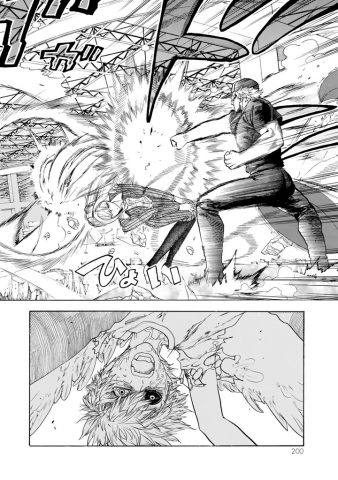
Source: Cells at Work! © Akane Shimizu / Kodansha, Aniplex, davidproduction
There are many different types of white blood cells

Source: Cells at Work © Shimizu Akane/Kodansha, Aniplex, davidproduction
In "Cells at Work," the neutrophils in their white work clothes are the most striking white blood cells. Their aggressive elimination of bacteria and viruses that invade the body has made them synonymous with white blood cells.
However, neutrophils are said to account for around 50% to 70% of all white blood cells. What about the rest? It turns out there are other white blood cells besides neutrophils.

Source: Cells at Work! © Shimizu Akane/Kodansha, Aniplex, David Production
In other words, there are many types of white blood cells other than neutrophils, and each protects the body while fulfilling its assigned task. This time, we'll introduce all the white blood cells that appear in "Cells at Work!"
1. Eliminate all bacteria you find! Neutrophils

Source: Cells at Work! © Shimizu Akane/Kodansha, Aniplex, DavidProduction
Neutrophils are blood cells that make up 50% to 70% of all white blood cells. Because this character is the central focus of "Cells at Work!", one might imagine that all white blood cells are neutrophils, but that's not the case. They are hard workers who eliminate bacteria and viruses that invade the body as soon as they find them, maintaining peace within the body.
When they find bacteria or other microorganisms, they attack mercilessly.
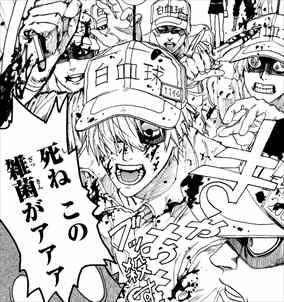
Source: Cells at Work! © Shimizu Akane / Kodansha, Aniplex, David Production
Neutrophils are unique in that they mercilessly attack and eliminate bacteria or other microorganisms as soon as they find them. While they usually appear cool, they become ferocious when fighting bacteria, which is why the surrounding cells consider them eccentric.
Moving smoothly through tissues with chemotaxis
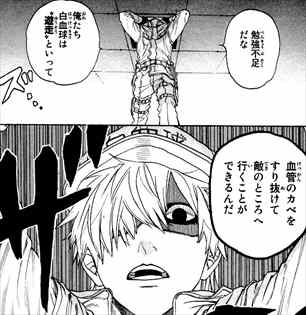
Source: Cells at Work! © Akane Shimizu/Kodansha, Aniplex, David Production
Neutrophils have the ability to chemotaxis. This ability allows them to move freely between tissues within the body, allowing them to quickly arrive at the site of bacterial infestation and eliminate them. From the bacteria's perspective, the sudden appearance of neutrophils can be quite a surprise.
Killing bacteria through phagocytosis
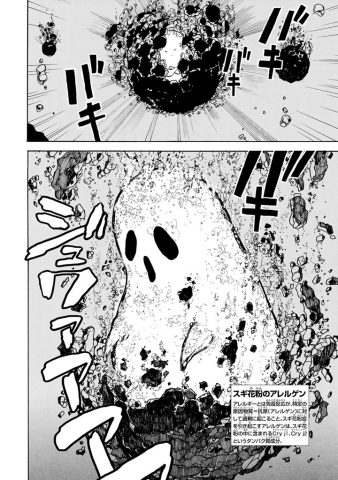
Source: Cells at Work! © Shimizu Akane/Kodansha, Aniplex, David Production
Neutrophils phagocytose bacteria, killing them by decomposing them internally. There was a memorable scene in the film where neutrophils munched on bacteria, saying, "If you eat it, you'll understand."
However, in reality, neutrophils that engulf bacteria eventually die, and their bodies turn into pus and are released from the body.
Detecting Bacteria with Receptors
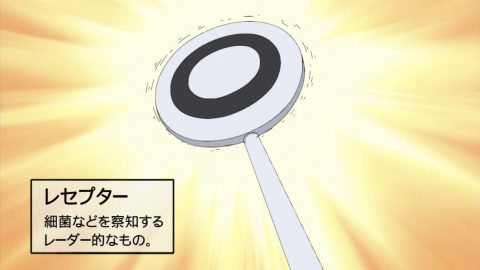
Source: Cells at Work! © Shimizu Akane / Kodansha, Aniplex, davidproduction
Neutrophils have radar-like receptors that react to nearby bacteria and quickly head toward them. The receptors in the series are designed to resemble buttons on a buzzer, a design that has been criticized by red blood cells for its uncool nature.
Before becoming white blood cells, they are myelocytes

Source: Cells at Work! © Shimizu Akane/Kodansha, Aniplex, davidproduction
Before becoming fully-fledged white blood cells, neutrophils undergo a stage called myelocytes, and in the series, they are depicted being raised in a school-like environment within the bone marrow. Having had a strong sense of justice since childhood, myelocytes once saved an erythroblast that was being attacked by Pseudomonas aeruginosa.
2. Leave it to us when it comes to parasites! Eosinophil

Source: Cells at Work! © Shimizu Akane / Kodansha, Aniplex, David Production
Eosinophils are a type of blood cell that make up 2% to 5% of all white blood cells. In the series, they have blonde pigtails, wield a forked spear, and wear pink work clothes. Eosinophils are not particularly effective against bacteria. Therefore, when bacteria invade the body, they become a hindrance, drawing the ire of those around them.
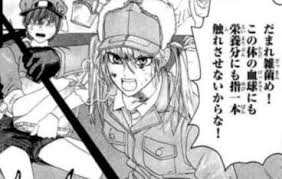
Source: Cells at Work! © Shimizu Akane / Kodansha, Aniplex, davidproduction
However, eosinophils' strength isn't in defeating bacteria. They're also highly resistant to parasites, preventing them from infecting the body. Parasites are large organisms compared to bacteria, so neutrophils have a hard time dealing with them. However, eosinophils can easily defeat parasites.
Eosinophils are weak when praised

Source: Cells at Work! © Shimizu Akane / Kodansha, Aniplex, David Production
Usually, Eosinophils feel guilty because they're a hindrance in the fight against bacteria. However, when they protect the body from a parasitic infection, they receive praise from those around them. Eosinophils, who aren't used to receiving praise, break out into a grin that's hard to imagine from their usually cool demeanor.
3. Basophils attract neutrophils and eosinophils

Source: Cells at Work! © Shimizu Akane/Kodansha, Aniplex, David Production
Basophils are a type of white blood cell that make up less than 1% of the total body. When they encounter certain antigens, they release histamines and other substances, which are said to trigger allergic reactions.
It is also said to produce substances that attract neutrophils and eosinophils to problem areas, and when parasites invaded the body, eosinophils and white blood cells were present in the area where they rushed to the scene.
The Mysterious Basophil

Source: Cells at Work! © Shimizu Akane/Kodansha, Aniplex, David Production
However, much about basophils remains unknown. Perhaps because of this, even as characters, they often blurt out mysterious things, confusing those around them. However, eosinophils seem to understand what they're being told.
His appearance is also typical of a chuunibyou (middle school syndrome) character. He only appeared in the episode about parasites, but it will be interesting to see if he'll be involved in some way in the future.
4. NK Cells: Eliminating Viruses and Cancer Cells

Source: Cells at Work! © Shimizu Akane/Kodansha, Aniplex, davidproduction
NK cells are immune cells that patrol the body and attack viruses and cancer cells as soon as they are found. She has an aggressive personality, appears to be a muscular woman, and fights using a saber as her weapon.
Activated by Laughter

Source: Cells at Work! © Shimizu Akane / Kodansha, Aniplex, davidproduction
NK cells are stimulated by laughter, which stimulates the diencephalon to actively produce neuropeptides, signaling molecules that attach to NK cells and activate them. In the story, laughing powers up the NK cells, which helps them defeat cancer cells. Conversely, excessive stress can weaken the immune system and cause a loss of energy.
Gothic Lolita fashion was around in the old days!?

Source: Cells at Work! © Shimizu Akane/Kodansha, Aniplex, davidproduction
When dendritic cells scattered old photos of NK cells to activate them, the photos they received showed them standing next to macrophages in Gothic Lolita fashion. The appearance is completely different from the NK cells of today, and it seems that this was a dark memory for the NK cells themselves, so they went crazy the moment they saw the photo.
But whatever the shape, they were more powerful.
5. Create antigens and wipe out the enemy! B Cells

Source: Cells at Work! © Shimizu Akane/Kodansha, Aniplex, David Production
B cells receive antigen information from dendritic cells and memory cells, producing antibodies and wiping out enemies. As long as B cells produce antibodies, they can turn the tide of battle, making them a trusted presence. However, if the presentation of antigen information is delayed, they will be unable to contribute at all to the fight.
Working effectively together with memory cells

Source: Cells at Work! © Shimizu Akane/Kodansha, Aniplex, davidproduction
Memory cells are cells that remember the antigen information of bacteria and viruses that have previously invaded the body. Therefore, B cells can create antibodies from the antigen information stored by memory cells, so the combination of these two gives an advantage in battle. However, memory cells are often quite forgetful, and the presentation of antigen information is delayed, resulting in failure to produce antibodies.
They play an important role, but they don't stand out.

Source: Cells at Work! © Shimizu Akane / Kodansha, Aniplex, davidproduction
By producing antibodies, memory cells can wipe out enemies, making a significant contribution to the fight against bacteria. However, it's the dedicated cells, such as neutrophils and killer T cells, that always stand out. Feeling dissatisfied with this, he continues to spray antibodies.
6. Killer T Cells: The Assassins Who Protect the Body

Source: Cells at Work! © Shimizu Akane / Kodansha, Aniplex, davidproduction
Killer T Cells are the body's internal killers, acting like an army of killers dispatched by helper T cells to eliminate bacteria and viruses. They are feared by those around them due to their aggressive nature, and the group of killer T cells gives off an almost athletic vibe.
They Used to Be Naive T Cells

Source: Cells at Work! © Shimizu Akane / Kodansha, Aniplex, davidproduction
Naive T cells are immature T cells that have never encountered an antigen. Although they are a low-ranking and unreliable member of the T cell corps, they rapidly mature thanks to the T cell activation effect of dendritic cells.
A Dropout at Thymus School

Source: Cells at Work! © Shimizu Akane/Kodansha, Aniplex, David Production
Before becoming killer T cells, they undergo rigorous training at a place called Thymus School. It's said that only a small percentage of students graduate from Thymus School and become fully-fledged killer T cells, making it a tough path to success.
The leader, Killer T Cell, was originally a dropout at Thymus School. Those around him thought he would never graduate, but thanks to his daily efforts and the help of his peers, he managed to graduate with flying colors.
Memory T Cell

Source: Cells at Work! © Shimizu Akane / Kodansha, Aniplex, davidproduction
A type of T cell that looks like a Killer T Cell. He keeps a cute book of enemy records.
Ultimate Move: "T-Cell Perforin Cannon Punch"
The killer T cells had been practicing this technique since their days at Thymus School. They were able to unleash it at the crucial moment, successfully protecting the body from cancer cells.
7. Helper T cells issue commands to immune cells
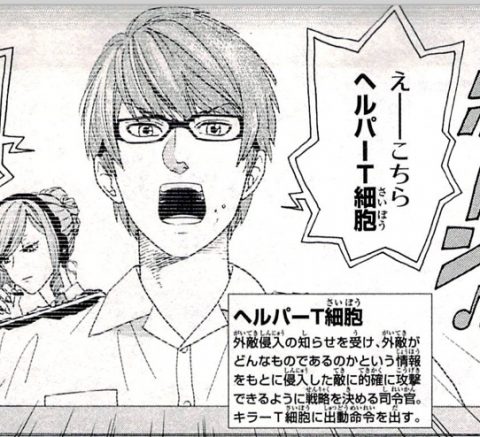
Source: Cells at Work! © Akane Shimizu/Kodansha, Aniplex, David Production
Helper T cells act like commanders, issuing commands to immune cells in response to bacterial and viral intrusions. Killer T cells and other immune cells are dispatched to the scene through the work of these helper T cells.
Elites at Thymus School

Source: Cells at Work! © Akane Shimizu/Kodansha, Aniplex, David Production
Like killer T cells, helper T cells also attended Thymus School in their childhood. During that time, they were elites and achieved outstanding grades. Later, his encounter with and friendship with killer T cells led him on the path to becoming a helper T cell.
He also has a slightly clumsy side

Source: Cells at Work! © Akane Shimizu/Kodansha, Aniplex, David Production
Though Helper T Cells have a cool and clever image, they sometimes have a clumsy side, like when they issue commands with cookie crumbs still stuck to their cheeks.
8. Macrophages: Killers, Cleaners, and Nursery School Teachers

Source: Cells at Work! © Akane Shimizu/Kodansha, Aniplex, David Production
Macrophages, which are said to account for 3% to 6% of all white blood cells, not only kill foreign substances such as bacteria, but also present antigen information from them. They also clean up the bacteria they kill.
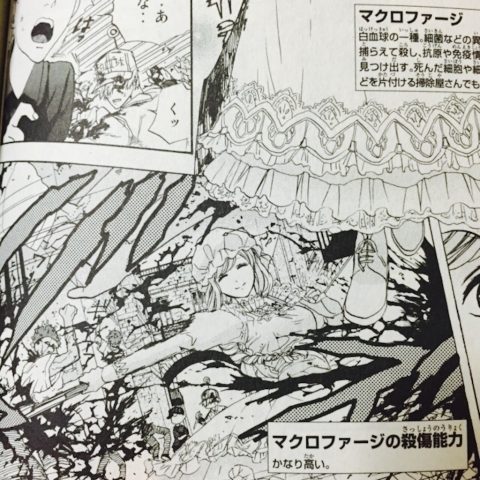
Source: Cells at Work! © Shimizu Akane/Kodansha, Aniplex, David Production
Although she appears to be an elegant young lady, she possesses extremely high lethality and can sometimes engage in combat that is so intense it can even scare those around her. She primarily uses hatchets and hammers as weapons.
She's also a nursery teacher who nurtures erythroblasts
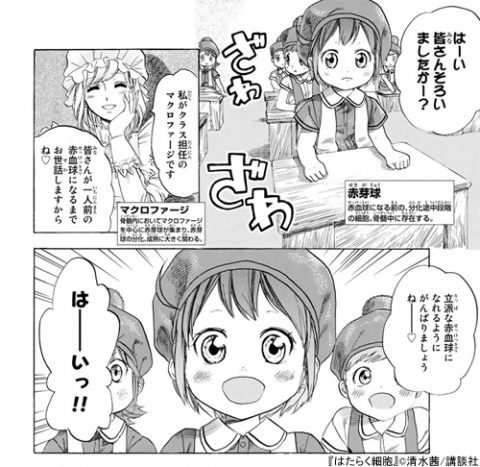
Source: Cells at Work! © Akane Shimizu/Kodansha, Aniplex, David Production
Macrophages function as killers and cleaners in the body, but they also play a nursery teacher-like role, nurturing erythroblasts in the bone marrow before they become red blood cells. She's a mysterious and fascinating character with many different faces.
9. Monocytes: The Temporary Form of Macrophages
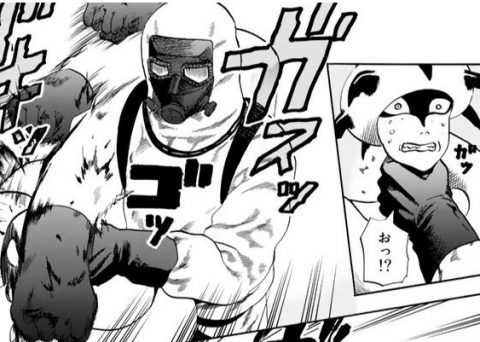
Source: Cells at Work! © Shimizu Akane/Kodansha, Aniplex, David Production
Monocytes are migratory cells that account for approximately 7% of all white blood cells. Their job is to destroy bacteria and other invading organisms, and they are highly reliable cells with strong migratory and phagocytic abilities.
Macrophages = Monocytes
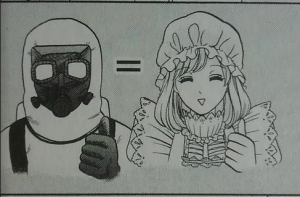
Source: Cells at Work! © Akane Shimizu/Kodansha, Aniplex, David Production
Monocytes are produced in the bone marrow and circulate in the bloodstream. However, once they leave the bloodstream, they become macrophages. The contrast between the macrophage's elegant appearance and the monocyte's full-body protective suit is stark, leaving the red blood cell astonished.
Summary
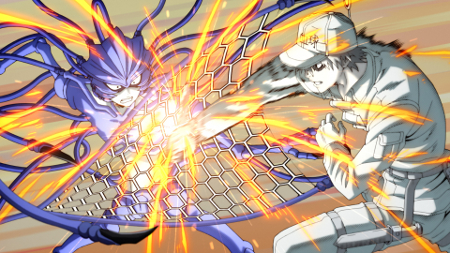
Source: Cells at Work! © Shimizu Akane / Kodansha, Aniplex, davidproduction
We've put together a list of the white blood cells that appear in "Cells at Work!" It's educational to learn that there are many different types of white blood cells. It will be interesting to see how these characters play a role in future developments.




